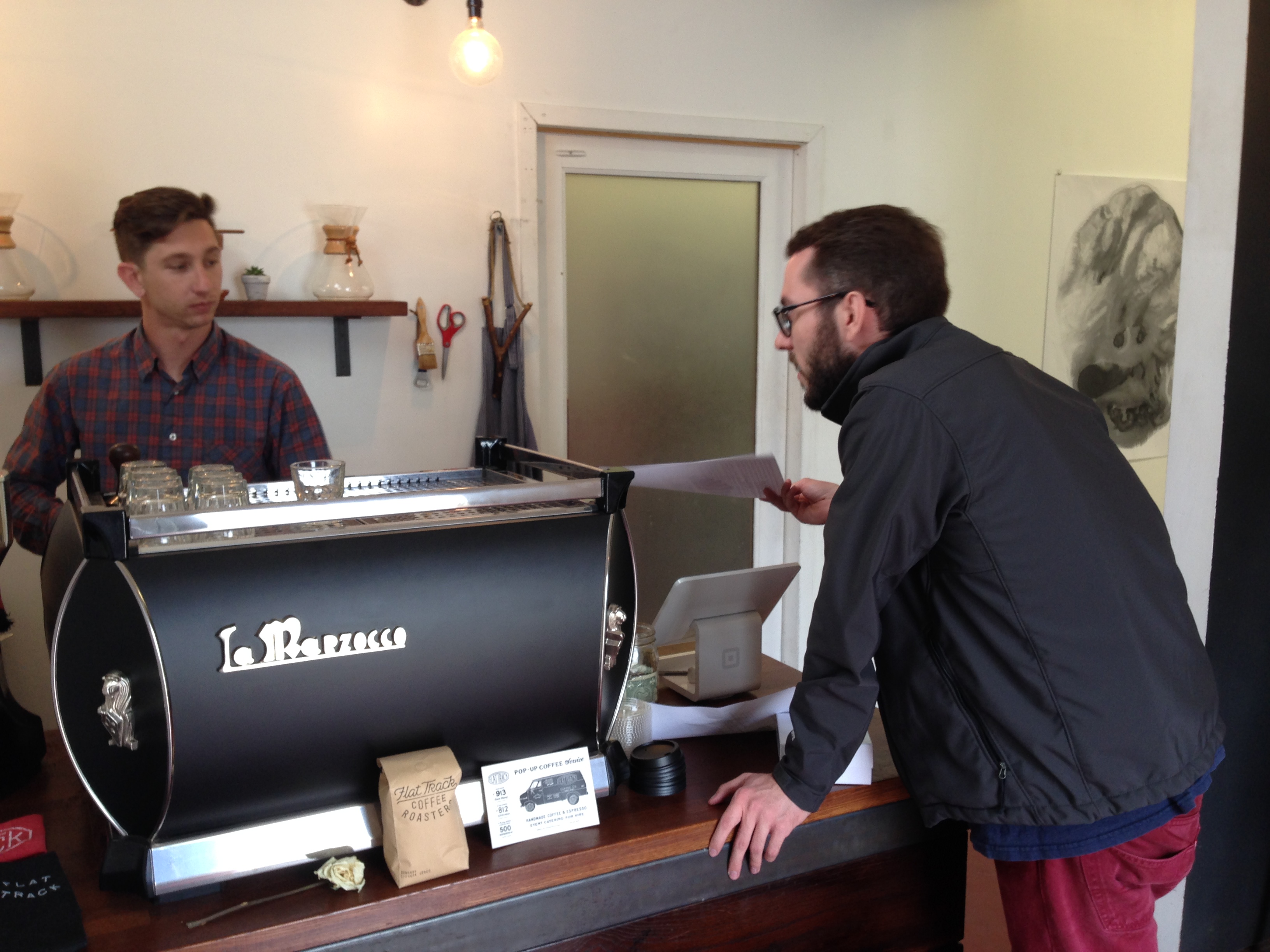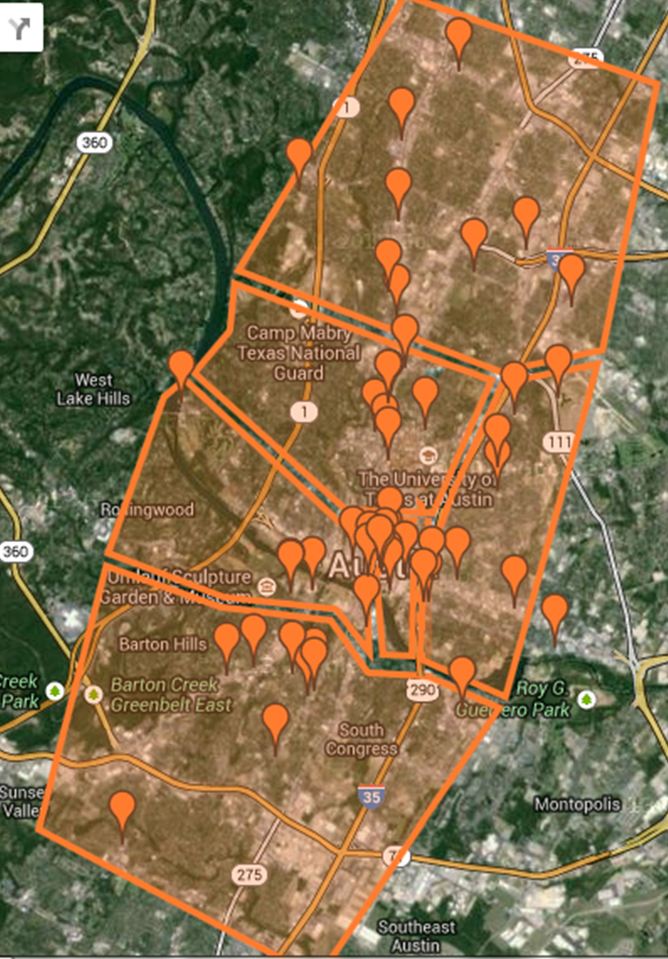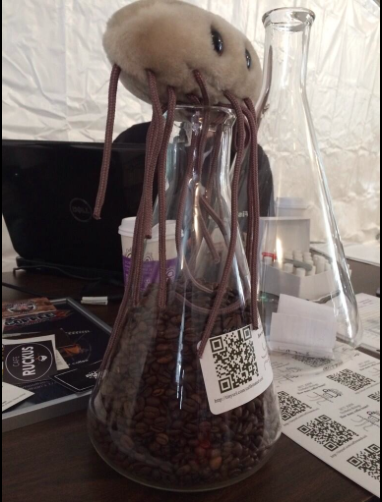Team:Austin Texas/human practices
From 2014.igem.org
(→Caffeinated Coli) |
(→Caffeinated Coli) |
||
| Line 95: | Line 95: | ||
A couple of weeks later, we presented this data set at the SXSW festival. As part of this outreach, we explained our project and synthetic biology to a wide range of people. Many people who came by had little to no background in science or technology, and even most of the ones who did had not heard about synthetic biology. By discussing our experiments with bacteria and coffee, an interesting and easy to understand application, we were able to explain what synthetic biology is and how it can be used in a beneficial way. Occasionally, these conversations would branch out into wider topics of science and technology. | A couple of weeks later, we presented this data set at the SXSW festival. As part of this outreach, we explained our project and synthetic biology to a wide range of people. Many people who came by had little to no background in science or technology, and even most of the ones who did had not heard about synthetic biology. By discussing our experiments with bacteria and coffee, an interesting and easy to understand application, we were able to explain what synthetic biology is and how it can be used in a beneficial way. Occasionally, these conversations would branch out into wider topics of science and technology. | ||
| - | + | [[file:SXSWcreatetable.JPG|left| 500px| Table at SXSW]] | |
People were particularly interested in the different types of coffee that yielded strange results. For example, it appeared that there was slightly more caffeine in the Epochs' Light Roast, than in the Dark roast, which seems to contradict the modern myth that dark roast coffee has more caffeine. There was much debate sparked when people started to make speculations on why that was so. Some people claimed that longer roasting destroyed the caffeine (and swore by cold-press coffee!), some people guessed that perhaps the dark roast sample had less coffee beans in it when it was brewed. Nevertheless, after much research by the team after the event, it was concluded that [http://en.wikipedia.org/wiki/Coffee_roasting coffee roasting] and [http://en.wikipedia.org/wiki/Coffee_preparation#Brewing coffee brewing] are largely variable processes, and caffeine content can hugely vary from batch to batch of beans. For more information about light roast vs. dark roast see this article at [http://www.scribblerscoffee.com/coffees_caffeine.htm Scribblers Coffee], which discusses the nuances between the two! | People were particularly interested in the different types of coffee that yielded strange results. For example, it appeared that there was slightly more caffeine in the Epochs' Light Roast, than in the Dark roast, which seems to contradict the modern myth that dark roast coffee has more caffeine. There was much debate sparked when people started to make speculations on why that was so. Some people claimed that longer roasting destroyed the caffeine (and swore by cold-press coffee!), some people guessed that perhaps the dark roast sample had less coffee beans in it when it was brewed. Nevertheless, after much research by the team after the event, it was concluded that [http://en.wikipedia.org/wiki/Coffee_roasting coffee roasting] and [http://en.wikipedia.org/wiki/Coffee_preparation#Brewing coffee brewing] are largely variable processes, and caffeine content can hugely vary from batch to batch of beans. For more information about light roast vs. dark roast see this article at [http://www.scribblerscoffee.com/coffees_caffeine.htm Scribblers Coffee], which discusses the nuances between the two! | ||
People also were extremely curious as to why the Wright Bros. Brew & Brew sample had a significantly more amount of caffeine. This data point compelled us to speak to one of the owners of Wright Bros. Brew & Brew, to determine how they had created such a highly caffeinated beverage. The owners concluded, after discussing our project and the coffee brewing process, that the specific pot of coffee was probably just not fully drained, i.e. there was less water in the batch than normal, resulting in a higher caffeine/volume content. However, similar conversations were had between the entire team and the various coffee shops and baristas during the collection and presentation processes. | People also were extremely curious as to why the Wright Bros. Brew & Brew sample had a significantly more amount of caffeine. This data point compelled us to speak to one of the owners of Wright Bros. Brew & Brew, to determine how they had created such a highly caffeinated beverage. The owners concluded, after discussing our project and the coffee brewing process, that the specific pot of coffee was probably just not fully drained, i.e. there was less water in the batch than normal, resulting in a higher caffeine/volume content. However, similar conversations were had between the entire team and the various coffee shops and baristas during the collection and presentation processes. | ||
| - | + | [[file:e.coliplush.png|thumb|right| Coffee bean counting contest]] | |
To involve everyone attending the event and raise more awareness for the iGEM team, we held a contest in which patrons attending the event could enter to win an ''E. coli'' plush upon following us on [https://twitter.com/UT_iGEM Twitter.] | To involve everyone attending the event and raise more awareness for the iGEM team, we held a contest in which patrons attending the event could enter to win an ''E. coli'' plush upon following us on [https://twitter.com/UT_iGEM Twitter.] | ||
| - | |||
| - | + | ||
| + | |||
Revision as of 19:24, 15 October 2014
|
 "
"









